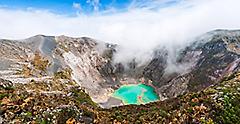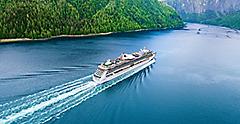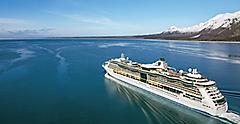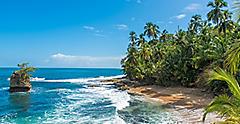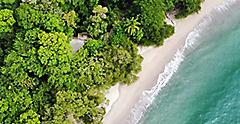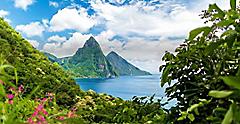
Discover A Rich Cup Of History
Although coffee now seems like an inextricable part of Costa Rica's identity, the plants are not actually native to the country. Coffee first arrived there from Cuba in the late 18th century, when Costa Rica was still a Spanish colony. It only took about 30 years for colonial Ticos (the name Costa Ricans now affectionately give themselves) to turn coffee into a profitable cash crop. The country exported its first batches in 1820, just a year before Costa Rica became independent.
Throughout the early and mid-19th century, coffee quickly became Costa Rica's most profitable export, even more so than other crops such as tobacco and cacao, the source material for chocolate. During this time, the coffee trade funded the expansion of roads and railways across the country.
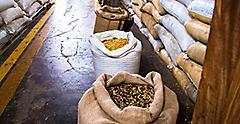
These days, Costa Rican coffee serves as an advertisement for the country around the world. Many tourists end up deciding to visit Costa Rica after having a delicious cup of it in their home city. This is particularly true in cities where expats from Costa Rica own and operate coffee shops and can tell stories about their native country and the importance of coffee to their own families or cultural pride. Some might even pair coffee with typical Costa Rican cuisine, such as gallo pinto (a rice and bean dish often served for breakfast) and casado, a rich and complex platter that combines rice and beans with eggs, vegetables and any number of meats.
Despite the many changes during Costa Rica's long coffee cultivation history, most fincas (farms) in the country remain family-owned. As a result, coffee in Costa Rica has always embodied the fair trade principles that have now become so important for conscious consumers. No matter where or how you buy coffee during your Costa Rica vacation, you can be sure the money will be fairly distributed not only to the people who grow and harvest it but also to the families who've nurtured coffee farms for decades or even centuries.
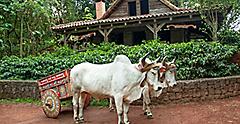
Journey Through Costa Rica's Coffee Route
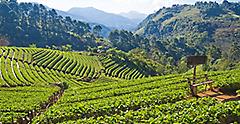
While some travelers are content with a coffee farm day trip from one of Costa Rica's tourist destinations, others want to focus their adventures more intently on the grano de oro. The good news is that there are plenty of coffee farms in more than half a dozen coffee-growing regions throughout the country. By some estimates, there are nearly 50,000 people working on coffee farms in this country of just 5 million people!
Costa Rica doesn't have an established "coffee route" like other destinations, although you can absolutely create your own depending on where in the country you're traveling. If your cruise ship docks in Puntarenas, for example, you can head north through the Guanacaste growing region to the mysterious Monteverde Cloud Forest — a typical first stop for travelers who are just arriving in Costa Rica.
Another option would be to hold off until later in your trip when you're in or near the Costa Rican capital of San Jose. Several Costa Rican coffee regions orbit the city, namely Tarrazú, Orosi and the famous Valle Central, Costa Rica's largest and most prolific coffee producing area. You could find a hotel within the city center, then plan to visit a different finca every day. Or, you could take a multi-day road trip, and stay at or near a different farm each night or two — assuming you can sleep after drinking all that coffee!
For some travelers, organized Costa Rica coffee tours are a more appealing option. Organized tour operators in San Jose, Liberia and many other cities and towns in Costa Rica may offer coffee packages. While these are typically day trips, you can always speak to a travel advisor and ask them about a more comprehensive coffee tour in Costa Rica. The country has no shortage of options in this department.

Anatomy Of A Coffee Tour
No matter where in Costa Rica you take your coffee tour, certain aspects of it will be very similar. Upon arriving at the finca, your guide will provide a brief overview of the farm's history — and likely the family's, too. You'll be led out into the rows of coffee trees, where, depending on the time of year, the ripening beans may be different colors. If they're green or gray, they're newly grown and likely far off from harvesting. Broadly speaking, the coffee season in Costa Rica takes place between October and March each year, but this will vary depending on where in the country you are and what the particular farms' growing methods are.
If the coffee fruit is red, it has reached the "cherry stage" and is ready for processing. Your guide might have some coffee cherries on hand for you to touch or smell as you move on to the factory part of the farm. Here, you'll likely see a combination of modern machinery and more traditional assemblies of chutes, compartments and sorting equipment. This is where the beans are sorted and washed before being dried and eventually roasted. At some farms, you may be able to see and smell the roasting process.
Taking your time is an important part of Costa Rican culture, and coffee tours are no different. The exploring phase of your coffee tour will likely take at least an hour, or maybe longer. Since most farms are family-run, you can be sure your host will have lots of interesting stories, some that may go back decades. During this time, as you watch the transformative process that takes the coffee from the tree to a processing plant, you're probably wondering one thing: When do I get to take a sip?
Not to worry: Your guide is saving the best part for the end! After finishing the tour, the finca staff will most likely treat you and all the rest of the participants to a cup of Café de Costa Rica, likely filtered using the traditional chorreador or "sock" apparatus Costa Ricans have been using for over 200 years. Sip slowly and mindfully — can you taste a difference between this and the machine-brewed coffee you might have enjoyed elsewhere? Afterward, you'll have the opportunity to buy some coffee, which is not only a great souvenir but also a wonderful way to support local farmers.

Costa Rica, Beyond The Coffee
Most travelers to Costa Rica want to take a coffee tour, though few end their trips only having done one. Costa Rica, in spite of its small footprint, is one of the world's most eclectic travel destinations, with a huge variety of landscapes and biomes. It also boasts beaches on both the Pacific Ocean with ports like Quepos and Caribbean Sea by way of many vacation destinations including Puerto Limon. If you dock in Puntarenas and are feeling like sunbathing, you might want to head south to Jaco or even further down the coast into Manuel Antonio National Park, a sanctuary of protected, paradisaical beaches.
Another option would be to head north (possibly stopping along the way at a coffee finca or two) to Monteverde Cloud Forest. After traipsing across suspension bridges that seem to float amid the canopy of the misty rainforest, you can continue driving northward, preferably to Rio Celeste. This mesmerizing waterway shimmers a fluorescent blue-green due to volcanic minerals and ends at a pool where a waterfall dramatically thunders into a spacious basin. As beautiful as it looks, you can't swim here — it's prohibited by the park for safety reasons.
Waterfalls and volcanoes are some of Costa Rica's most iconic landscapes. The most famous Costa Rican volcano is probably Arenal, a perfectly conical mountain located on the way from Monteverde back to the capital San Jose. Situated above a lake and acting as the source of many hot springs in the area, Arenal sits at a high altitude, giving the region a cool, fresh climate. The Catarata Rio Fortuna waterfall is not far from here. Other amazing Costa Rican volcanos include Irazú and Poas, which sits near the dramatic La Paz waterfall.
Although your cruise to Costa Rica will likely dock on the country's Pacific Coast, the Caribbean side of the country holds many treasures as well. Most travelers head to laid-back Puerto Viejo when they visit Costa Rica. If the center of town doesn't have you feeling as relaxed as all the sloths that are native to this part of the country, dramatic beaches like Manzanillo and Punta Uva will get you in that "Pura Vida" mood. Another option is to visit Limón, where quieter beaches complement the more local vibe that dominates here. You'll definitely want to practice your Spanish before you arrive on your Costa Rica vacation!
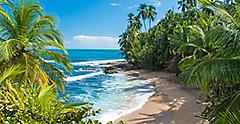
Drink It In
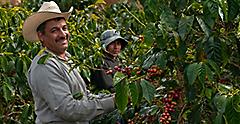
Get Royal Deals, Sign Up Today

Getting There
Explore Our Most Affordable Itineraries
Plan a day trip with blissful enjoyment! Sip your way through Costa Rica, one coffee at a time on your cruise to Puntarenas.


